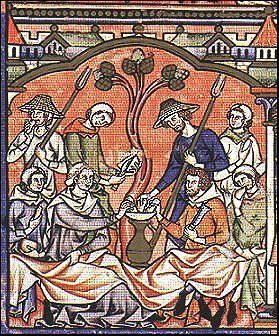 In the Spanish language we will refer to "kingdoms of taifa" when we are talking about a structure composed of multiple parts (generally a human structure), but separated from each other by borders of some kind, so that, by not being able to cooperate, they are weakened . But where does this expression come from?
In the Spanish language we will refer to "kingdoms of taifa" when we are talking about a structure composed of multiple parts (generally a human structure), but separated from each other by borders of some kind, so that, by not being able to cooperate, they are weakened . But where does this expression come from?
The Taifa kingdoms were the small Muslim kingdoms that were the product of the disintegration of the Caliphate of Córdoba into a constellation of independent states that owed more to the particular interests of their leaders than to a specific political-social reality.
The disintegration took place from the year 1.009 AD. with the deposition of the caliph Hisham II, after which several caliphs followed, until it culminated in 1031 with the deposition, by a popular revolt, of Hisham III, the last caliph. So the caliphate is formally abolished.
From then on, a process similar to that which was also taking place in the Christian field takes place, a centrifugation of power that leads it to decentralize first to fragment territorially later.
This means that the local representatives of the local power, at some point cut the bond of vassalage / fidelity that united them, and declared their independence.
Among the first and most famous taifa that we can cite are those of Zaragoza, Valencia, Toledo, Denia or Granada.
The causes of the formation of the Taifa kingdoms were, mainly, the power struggles of noble Muslim families, although we also found deeper problems, such as a social fraction of a racial type among the different Muslim settlers of the peninsula.
Descendants of the first invasion waves, we had Arabs and Berbers, who had to be added to the indigenous settlers converted and / or culturally assimilated at some level, although in general not totally.
The fragmentation of the old caliphate resulted in a series of states that, taken together, were weaker. This favored the "reconquest"
This is due to the competition established in all senses between the different Taifa kingdoms, both in the economic and cultural fields, as well as in the military field.
This coincided with a time when, after stabilizing the borders with the Christian world in the Iberian Peninsula, the Christian kingdoms began a path of economic, cultural prosperity, and demographic expansion, which together also led to a period of growth. military.
The disintegration of a great kingdom in various parts was, therefore, one of the causes responsible for the success of the reconquest process, by allowing the Christian kingdoms to separately attack each of these smaller ones.
They were not stable over time, since when fighting among themselves and against the Christian kingdoms, there were conquests and mergers among themselves, as well as disappearances of the taifa as the reconquest progressed.
An example of the weakening of the taifa were the pariahs, the taxes that the Christian kingdoms imposed on them, thus converting them into tributaries.
The evolution of the various reigns led to three distinctive phases within this stage, until the kingdom of Granada, the last taifa, fell.
As during all these periods, the taifa kingdoms stood out for their progressive weakening, the expression “taifa kingdoms” remained in the Spanish language as an indicator of the weakness caused by the division.
Photos: Fotolia - dudlajzov









